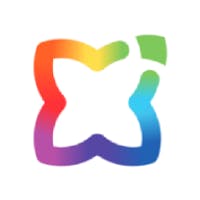What do you have in common with your students/teachers?
Does it matter that students and teachers have things in common?
The findings of the Roll Call project focused firstly on three main areas-race, gender, sexuality. The differences were huge in terms of cultural diversity. While learners of colour made up over half of respondents, teachers of colour were only 20%.
Just over half of learners were male, but 80% of teachers were female. The study also found that just over half of 13-20 year olds “do not identify as "100% heterosexual," whereas it is still “complicated” for LGBTQ+ teachers to be out at work.
As one young learner in the study put it “I’ve never had a teacher of colour. How can I expect my teachers to understand the world I grew up in as a young black male, when they are all white women?”
While the figures in Europe vary as to how reflective the diversity of educators is compared to the communities of learners they serve, there is almost always a significant gap. This is clearly something which needs to be addressed.
Celebrating cultural diversity begins with you
Cultural diversity goes further than race, gender and sexuality. Language, religion and economic background are all features of cultural diversity alive right now in our learning environments.
Yes we must work harder to be inclusive in our hiring practices, and encourage more diversity among educators so that learners can see themselves reflected in those who mentor and support them. However, all of us also need to look at our approach to exploring diversity and inclusion in the learning environment.
Before “teaching” diversity, educators need to get their own house in order. Becoming culturally responsive and racially aware is a journey, which can be uncomfortable and profound. How many educators take this journey, to question their own biases, examine their privilege, and to recognise and acknowledge the lived experience of others? Have you?
To learn how cultural diversity can be celebrated as strength, we must first understand our own weaknesses. How have our experiences shaped us? What might we be blind to? We are all learners, and truly surrendering to a profound exploration of our own blind spots is a reminder of this like no other.
Cultural diversity in the learning environment
The path to global citizenship can begin for many in the learning environment. The lens through which each learner views the world is not to be left at the front door. The way we communicate and respond to each other, the nuances of our approach to relationships, the way we demonstrate status, the beliefs we hold about the” other”, and the language we use to frame them; all of this diversity is within our learning environments now, ready to be explored.
During the Roll Call project, Kristin Leong found that “teachers are just as frustrated and challenged by the culture gaps in our schools as our students are...I’ve seen empathy fill classrooms full of both teachers and students after learning the stories of their peers”
When learning environments are truly focused on the learner, we hold space for their stories. Welcomed and celebrated they are, from pronoun to preference, as we move away from the deficit model where differences are “weird” and uncomfortable.
Cultural diversity is not just a “subject” and certainly not a “workshop”. Every learning experience presents the opportunity to reflect on how we interact and deal with challenges.
Closing the cultural diversity gap
Some learning environments are only accessible to those who can afford it. Some reflect the community around them and others are islands. Regardless of diversity, inclusion and awareness are far from a given.
In all of these scenarios there can be a gap, not just between the learners and the world around and ahead of them, but within themselves too. To be supported to explore and celebrate who we are and what we bring to the table is just as vital as the space to learn the stories of others.
Helping to close these gaps is what we owe our learners. While we address our very obvious diversity problem among educators and administrators, we can still move forward.
The community around us is a rich resource to connect our learners to richer learning experiences, and whether it is a tour of black-owned businesses or making sweets to bring to the local Gurdwārā for Bandi Chor Divas, our learners benefit from stepping outside their typical environments and learning more about what connects us all.
In a recent provocation on diversity and inclusion with Defina Terrado, we at Learnlife discussed how we might challenge our own assumptions about others and support learners to do the same, so that we might help develop the type of community we want to see in the world, and we know there is work to do.
We would like to learn more and do more. If you are engaged in supporting learners or Learning Guides to better understand diversity and inclusion, whether it be within this paradigm or another, collaborate with us at Learnlife and share your learning with our community.


